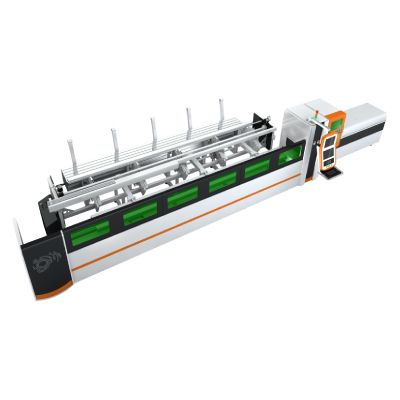****
In the realm of modern manufacturing, CNC laser cutting machines for metal work have emerged as a game-changer. These high-tech devices utilize computer numerical control technology to deliver unparalleled precision and speed when cutting various types of metals. The evolution of CNC laser cutting has redefined traditional metalworking processes, making them more efficient, accurate, and cost-effective. This article will delve into the features, advantages, applications, and future of CNC laser cutting machines in the metalworking industry.
**What is CNC Laser Cutting?**
CNC laser cutting combines the power of lasers with computer-aided design (CAD) and computer numerical control (CNC) systems. Lasers generate intense, focused beams of light that can be adjusted in terms of intensity and speed to cut metals with remarkable precision. CNC software interprets design files, enabling the machine to follow a predetermined cutting path with an accuracy that is typically measured in microns.
**Advantages of CNC Laser Cutting Machines**
1. **Precision and Accuracy**: One of the most significant benefits of CNC laser cutting machines for metal work is their ability to achieve high levels of accuracy. This precision is vital in industries that require intricate designs and components. Tolerances can be maintained to within ±0.1mm, making CNC laser cutting the preferred choice for critical applications.
2. **Speed and Efficiency**: CNC laser cutting machines can operate at high speeds without compromising on quality. This efficiency is particularly advantageous for businesses that rely on high-volume production, as it significantly reduces turnaround times. The speed of operation allows for rapid prototyping and meets tight deadlines seamlessly.
3. **Versatility**: These machines are capable of cutting a wide variety of metals, including steel, stainless steel, aluminum, brass, and more. Furthermore, they can handle varying thicknesses of materials, making them suitable for diverse applications, from thick industrial plates to delicate metal sheets.
4. **Minimal Material Waste**: The precision of laser cutting allows for tight nesting of parts, optimizing material usage. By minimizing the kerf (the width of the cut), manufacturers can reduce scrap, leading to significant cost savings over time.

Exploring the Versatility and Precision of CNC Laser Cutting Machines for Metal Work in Modern Manufacturing
5. **Complex Shapes and Designs**: CNC laser cutting machines can produce a vast array of intricate shapes and designs that would be challenging or impossible to achieve with traditional cutting methods. The flexibility of programming allows for rapid adjustments, making it easy to take on custom projects.
**Applications of CNC Laser Cutting Machines for Metal Work**

Exploring the Versatility and Precision of CNC Laser Cutting Machines for Metal Work in Modern Manufacturing

Exploring the Versatility and Precision of CNC Laser Cutting Machines for Metal Work in Modern Manufacturing
CNC laser cutting machines have found their place in various industries, showcasing their versatility and effectiveness:
– **Automotive Industry**: Precision cutting is critical in the automotive sector, where parts must fit together perfectly. CNC laser cutting allows for the production of intricate components, such as brackets and chassis parts, that meet stringent quality standards.
– **Aerospace**: The aerospace industry requires components that are not only lightweight but also robust. CNC laser cutting machines provide the required accuracy for producing intricate parts while keeping weight to a minimum.
– **Manufacturing and Fabrication**: From signage to fabricating machinery, CNC laser cutting plays a crucial role in the production of metal parts and assemblies. The ability to customize and create complex designs quickly allows manufacturers to respond to market demands effectively.
– **Art and Design**: Artists and designers harness the precision of CNC laser cutting to create unique metal art pieces, decorative items, and customized installations. The creative potential is nearly limitless, allowing for innovative and striking creations.
**The Future of CNC Laser Cutting Machines**
As technology continues to evolve, so will CNC laser cutting machines for metal work. The integration of artificial intelligence (AI), machine learning, and improved software interfaces could further enhance the capabilities of these machines. Innovations such as hybrid machines that combine laser cutting with other processes (like plasma or water jet cutting) are on the horizon, promising even greater versatility.
Moreover, as industries increasingly prioritize sustainability, advancements that minimize energy consumption and waste will become vital. The ongoing development of fiber lasers, which require less energy than traditional CO2 lasers, is one step towards a more eco-friendly future for laser cutting.
**Conclusion**
CNC laser cutting machines for metal work are revolutionizing the manufacturing landscape. Their unmatched precision, efficiency, versatility, and ability to produce complex designs make them essential tools for various industries. As technology progresses, we can expect even more remarkable capabilities and applications, solidifying their place in modern fabrication processes. Whether you’re a manufacturer, designer, or artist, embracing CNC laser cutting technology could enhance your production capabilities and open doors to new creative possibilities. Fitness Equipment Laser Cutting




